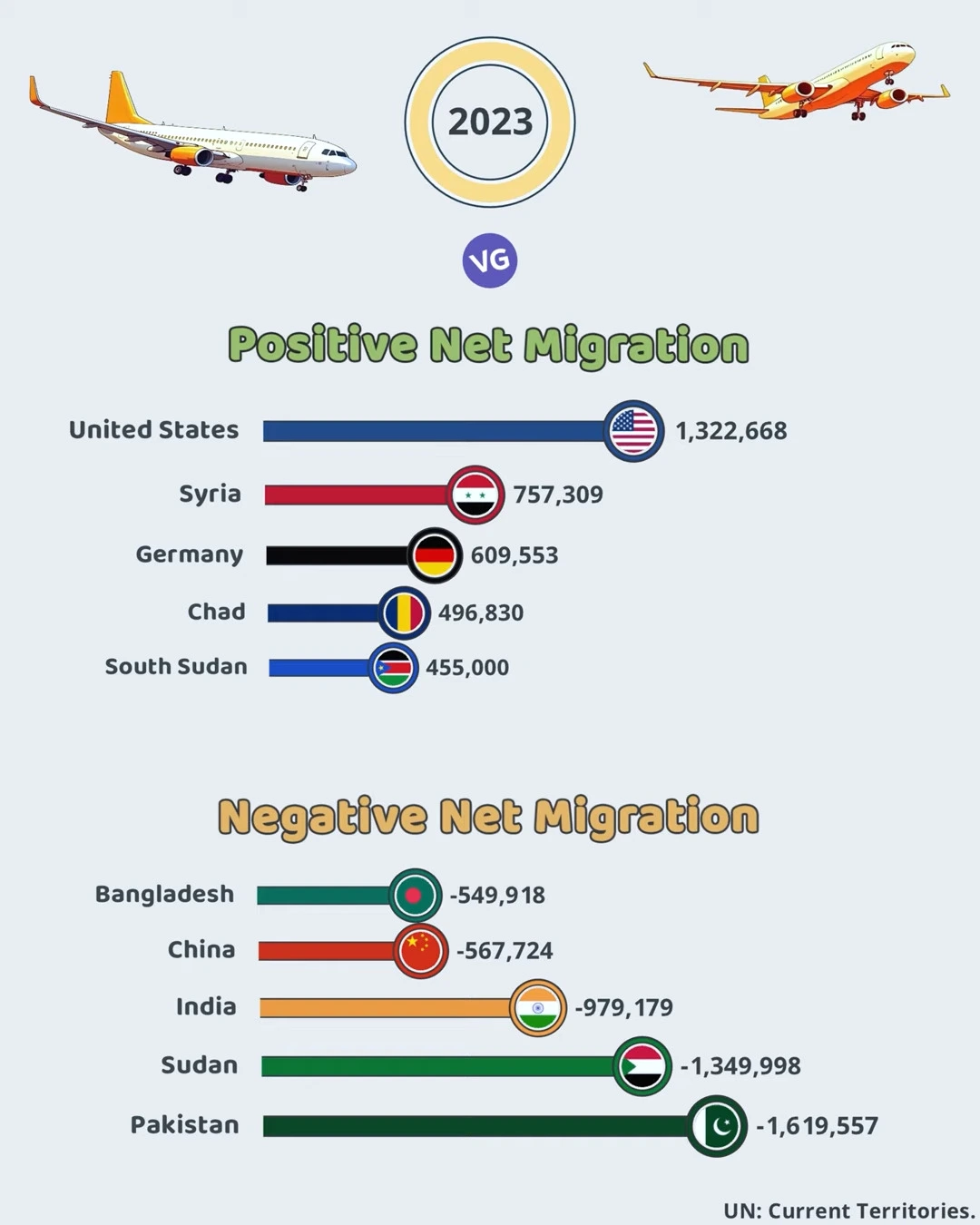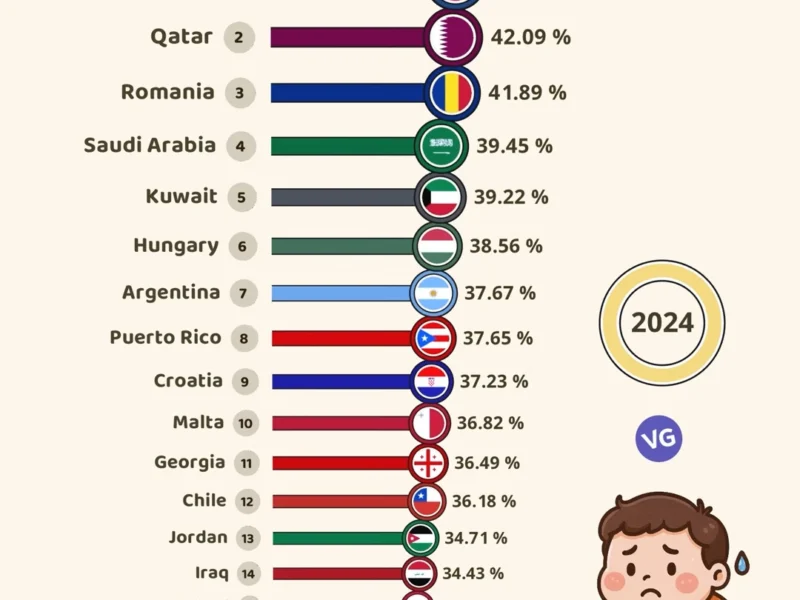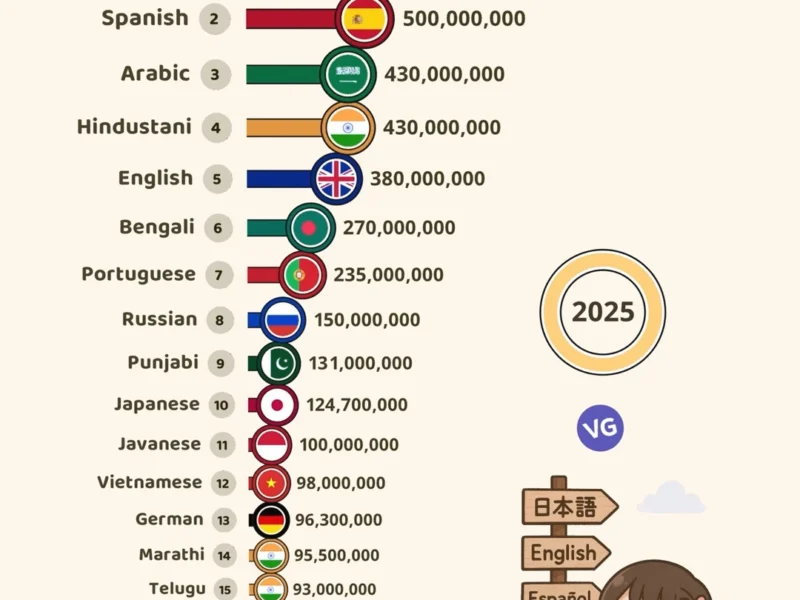The Positive Migration Leaders
The 2023 migration data presents a fascinating picture of global population movements, with the United States leading in positive net migration at 1.32 million people. This substantial inflow demonstrates America’s continued role as a primary destination for global migrants. Following the US, Syria shows a surprising positive net migration of 757,309 people, while Germany maintains its position as a major destination with 609,553 net migrants.
Positive Net Migration 2023
| Country | Net Migration |
|---|---|
| 🇺🇸 United States | +1,322,668 |
| 🇸🇾 Syria | +757,309 |
| 🇩🇪 Germany | +609,553 |
| 🇹🇩 Chad | +496,830 |
| 🇸🇸 South Sudan | +455,000 |
African Migration Dynamics
Notably, two African nations appear in the top five for positive net migration: Chad with 496,830 and South Sudan with 455,000 people. These numbers likely reflect regional movements and humanitarian situations in these areas, as both countries neighbor regions experiencing significant conflicts or crises.
Major Outflow Nations
Negative Net Migration 2023
| Country | Net Migration |
|---|---|
| 🇧🇩 Bangladesh | -549,918 |
| 🇨🇳 China | -567,724 |
| 🇮🇳 India | -979,179 |
| 🇸🇩 Sudan | -1,349,998 |
| 🇵🇰 Pakistan | -1,619,557 |
The negative net migration data reveals a different story, particularly in South Asia and China:
- Pakistan leads the outflow with -1.62 million people
- Sudan follows with -1.35 million
- India shows a significant outflow of -979,179
- China reports -567,724
- Bangladesh registers -549,918
Regional Patterns and Implications
This data paints a complex picture of global population movements. Several key patterns emerge:
- Developed economies like the US and Germany continue to attract large numbers of migrants
- Regional conflicts and humanitarian crises appear to drive significant population movements, particularly in Africa
- South Asian countries are experiencing substantial outward migration
- The scale of negative migration from populous nations like India, Pakistan, and China suggests significant economic and social factors driving emigration
Long-term Impact
These migration patterns have significant implications for both origin and destination countries. For receiving nations, this represents both opportunities and challenges in terms of integration and social services. For countries experiencing negative migration, this may signal brain drain concerns and demographic shifts that could affect their economic development.
Understanding these migration flows is crucial for policymakers and planners in both sending and receiving countries, as they shape everything from housing needs to labor markets and social services.



